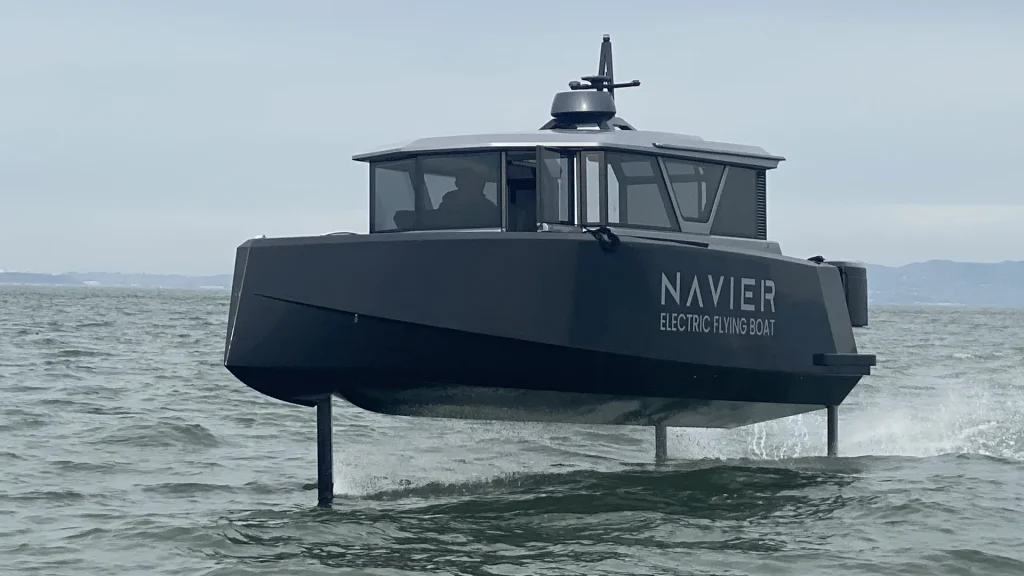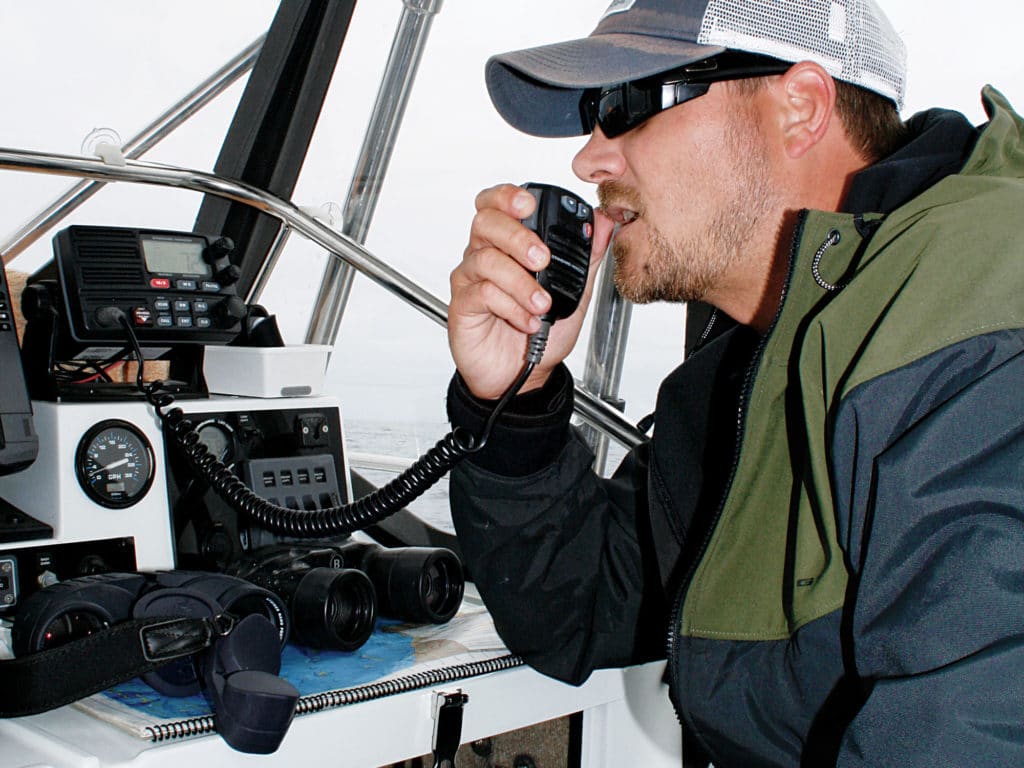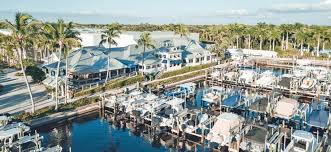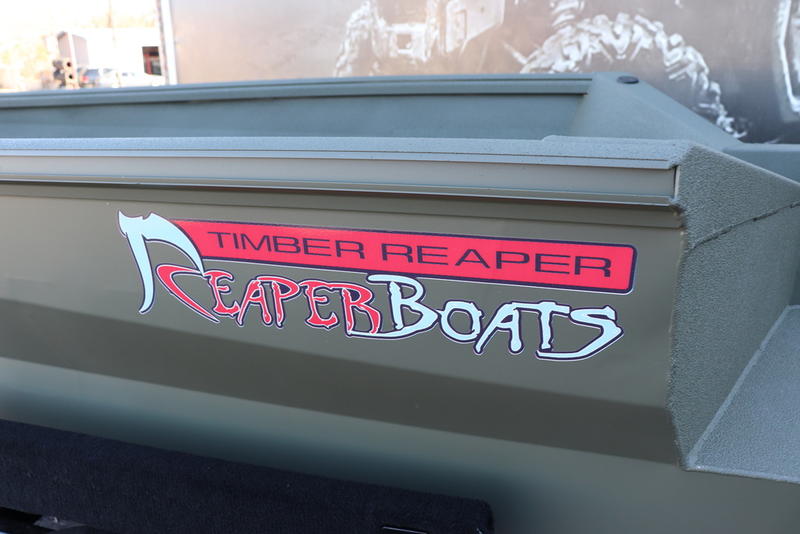Navier Boat: Revolutionizing the Electric Maritime Industry
Navier Boat, a groundbreaking company in the marine industry, has introduced the N30, an electric luxury boat designed with the future in mind. The N30 strikes an ideal balance between luxury, high utility, and performance, without compromising any of its features.

As one of the most advanced electric marine vessels available, it's perfect for a range of activities including fishing, water skiing, and family outings, as well as serving as a distinctive yacht tender.
The company's innovation focuses on creating hydrofoiling electric boats that are both eco-friendly and highly efficient.
Navier's vessels outperform traditional gas-powered boats in performance and utility. Incorporating cutting-edge technology, these boats are designed to transform waterways into the highways of the future.

Key Takeaways
- Navier Boat's N30 is an advanced electric luxury boat perfect for various recreational and professional applications
- Hydrofoiling technology enables eco-friendly and efficient operation, surpassing traditional gas-powered boats
- Combining innovative design with environmental sustainability, Navier aims to revolutionize the marine industry.
Navier Boat Overview
Navier is a pioneering company in the world of electric hydrofoiling boats. It aims to transform waterways with an innovative, eco-friendly, and efficient solution.
Founded by a team of MIT, Berkeley, and CMU graduates, the company's main product is the impressive N30 boat.
The N30 is a futuristic and versatile craft designed for multiple activities, including fishing, water skiing, and family outings. It can also serve as a unique yacht tender.
It combines luxury and utility without compromising on performance, making it a standout option in the market for electric hydrofoil boats.
In terms of construction, the N30 is built using high-quality carbon fiber materials to ensure lightweight and high strength.
One notable aspect of the Navier N30 is its software capabilities.
The boat is developed using advanced software systems, resulting in a highly efficient and user-friendly vessel.
The N30's technology is incorporated throughout the boat, providing more than 10 times the efficiency of traditional gas-powered boats.
Silent, zero-emission operation and a long range are also key features of the N30.
To provide an exceptional boating experience, the N30 is capable of speeds up to 35 knots.
Navier is committed to making this electric hydrofoiling boat accessible to the American market, making it one of the pioneers in commercially available electric hydrofoiling boats in the nation.
Design and Technology
Hydrofoil Technology
Navier Boat incorporates hydrofoil technology, which makes it more efficient and environmentally friendly compared to traditional boats.
Hydrofoils work by raising the hull of the boat above the water, reducing drag and allowing for higher speeds and smoother rides.
The Navier N30 model features retractable foils, enabling the boat to still operate efficiently in shallow waters.
Electric Propulsion
The boat is powered by an eco-friendly electric propulsion system, offering silent operation and zero emissions.
The N30 can reach a top speed of 35 knots or about 40 miles per hour and has a range of 75 nautical miles—approximately 86 miles on a single charge.
This performance is achieved through an efficient electric motor and large-capacity batteries, which contribute to the overall sustainability of the vessel.
Software and Autopilot
Navier Boat is equipped with advanced software and an autopilot system to enhance safety, navigation, and user experience.
The autopilot system enables users to set a destination, and the boat will automatically navigate to the designated location while avoiding obstacles and following maritime regulations.
Integration with various sensors and onboard technologies, such as GPS and radar, enables the boat to perform these tasks intelligently and independently.
Hull and Cabin Design
The hull of the Navier Boat is designed to minimize drag and improve efficiency.
The cabin features ergonomic seating, ample storage, and modern amenities to provide comfort and convenience.
The layout of the N30 model is optimized for both leisure and utility, providing space for socializing, dining, and relaxing while enjoying the benefits of the technologically advanced, environmentally friendly, and high-performance hydrofoiling craft.
Environmental Impact
Sustainability and Eco-Friendliness
Navier's electric hydrofoil boat, the N30, has been designed with a strong focus on sustainability and eco-friendliness.
Implementing hydrofoiling technology, the boat significantly reduces drag, enabling it to be 10 times more efficient than traditional gas-powered boats1.
The N30 offers a silent and eco-friendly mode of transportation on water, powered by electricity rather than fossil fuels.
By using advanced materials and innovative engineering techniques, Navier has reimagined the boating experience to prioritize efficiency and sustainability.
Key features of the N30 include:
- Zero emissions: As an electric boat, the N30 produces no harmful greenhouse gases or air pollutants.
- Clean energy usage: The boat's power source comes from renewable energy, like solar or wind power.
- Low noise pollution: Due to its electric motor and hydrofoil design, the N30 operates quietly, minimizing disturbances to marine ecosystems.
Reduction in Emissions
The transition to electric boats, such as Navier's N30, plays a crucial role in reducing emissions and improving the overall environmental impact of water transportation.
Traditional gas-powered boats release significant amounts of CO2 and air pollutants, contributing to global warming and air quality deterioration.
The N30 addresses these issues by providing a zero-emission alternative for users, significantly reducing emissions in the marine transportation sector.
In addition to reducing emissions, the N30's hydrofoil design minimizes water surface disturbances. This leads to a cleaner environment and diminished negative effects on local aquatic ecosystems.
As the demand for cleaner and more efficient transportation options grows, the Navier N30 represents a positive step forward in promoting environmentally conscious water travel.
Footnotes
Performance Metrics
Speed and Range
The Navier 30 is a high-performance electric hydrofoiling boat that features impressive speed and range capabilities.
The vessel is capable of reaching speeds of up to 35 knots (40 mph or 64 km/h), making it well-suited for various activities, including fishing, water skiing, family outings, and serving as a unique yacht tender.
With a range of 75 miles (65 nautical miles or 121 km), the Navier 30 is an ideal choice for those more extended excursions in a zero-emission electric boat.
Efficiency and Wake
One of the key features of the Navier 30 is its efficiency.
The boat is designed to be 10 times more efficient than traditional gas-powered boats, thanks to its innovative hydrofoiling technology, which significantly reduces drag and allows the vessel to "fly" above the water.
This technology not only contributes to the boat's efficiency but also reduces its wake, making it a more environmentally friendly option.
In addition to its hydrofoiling capabilities, the Navier 30 is equipped with a state-of-the-art electric propulsion system that ensures zero emissions.
The Navier team is committed to reimagining waterborne experiences in a sustainable way, transforming waterways and setting new standards for efficiency and performance in the electric boat market.
Use Cases and Applications
Water Taxi Services
Navier's electric hydrofoiling boats can potentially be used for water taxi services in locations with extensive waterways, such as the San Francisco Bay area.
Their smooth, stable, and efficient rides provide an eco-friendly alternative to traditional gas-powered boats, reducing emissions and noise pollution. This makes them an appealing option for urban water transportation systems.
The boats' impressive range, as well as autonomous docking features, make them ideal for short distance trips across lakes, rivers, and bays.
Recreational Use
The Navier boat can also serve as a versatile vessel for recreational use.
With its attractive design and high performance, the N30 boat is perfect for a variety of activities such as fishing, water skiing, and family outings.
- Fishing enthusiasts can enjoy the boat's quiet operation and ample space for equipment storage.
- Water ski lovers can benefit from the boat's efficient propulsion and wake control system.
- Families can share the smooth and comfortable ride on lakes and bays, while appreciating the environmentally responsible choice of electric power.
Commercial Fleet Operations
Commercial fleet operations can also benefit from incorporating Navier boats into their services. The autonomous docking feature simplifies one of the most challenging aspects of operating boats.
The benefits of the Navier boat for fleet operations include:
- Reduced operating expenses: Electric boats typically have lower fuel and maintenance costs compared to their combustion engine counterparts.
- Environmentally friendly: A zero-emission fleet can help businesses showcase their commitment to protecting the environment.
- Enhanced user experience: The hydrofoil technology offers a smooth and stable ride that passengers will appreciate.
- Improved fleet utilization: Autonomous docking and advanced navigation capabilities may increase efficiency and productivity in commercial fleet operations.
Company and Innovation
Founding and Vision
Navier was founded by Sampriti Bhattacharyya, a former MIT student, with the aim of developing electric hydrofoiling boats and transforming the way people travel on water.
The company's vision is to create sustainable, high-performance marine vessels that are both luxurious and eco-friendly. Navier's first product, the N30, is a groundbreaking example of their commitment to this vision, showcasing advances in electric propulsion and hydrofoil technology.
Research and Partnerships
Navier has been making strides in the realm of innovation, thanks to diligent research and various partnerships.
One of the company's major innovations is the incorporation of software at its core, allowing for unparalleled performance and efficiency in their electric marine vessels. This achievement is a clear indication of Navier's forward-thinking approach and their strong emphasis on technological advancements.
To further enhance the capabilities of their boats, Navier has forged partnerships with experts in the field, collaborating on various projects and ensuring that their boats have an edge over competition.
By working with leading innovators and industry professionals, Navier is poised to continue transforming the boating landscape.
Some key features of the Navier N30 include:
- A top speed of 35 knots (about 40 miles per hour)
- A range of 75 nautical miles (approximately 86 miles) on a single charge
- Hydrofoil design for increased efficiency and smooth, silent operation
Market and Competition
Electric Boat Market
The electric boat market is witnessing rapid growth as more consumers and businesses are realizing the benefits of environmentally-friendly water transportation.
Along with being more sustainable, electric boats are known for their quiet and smooth operation, making them popular for leisure cruising and commercial applications.
Some key players in the market, such as Navier and Candela, are developing advanced hydrofoiling electric boats that promise increased efficiency, range, and speed.
In recent years, funding opportunities have become more available for electric boating companies.
For example, Navier itself has received strategic investments from MarketX Ventures to help further advance and innovate its electric hydrofoiling technology.
Competitive Landscape
When it comes to competition, Navier faces a variety of companies in the electric boat market, with one notable rival being Candela.
Both Navier and Candela are focused on building hydrofoiling electric boats, offering a unique approach to sustainable water transportation.
Navier's flagship product, the N30, boasts a range of 75 miles at speeds up to 35 knots, making it an appealing option for water enthusiasts.
Supporting factors, such as a spacious interior and advanced navigation features, make the N30 a strong contender within the market.
In comparison, Candela also offers a hydrofoiling boat, but it is essential to note that each company has its unique approach to hydrofoil technology and design.
As the market for electric boats continues to grow, competition will undoubtedly drive innovation and encourage more development in the hydrofoiling sector.
Challenges and Future Outlook
Infrastructure and Regulation
As the demand for eco-friendly and efficient transportation increases, companies like Navier are working on the development of advanced electric hydrofoiling boats.
One of the main challenges in implementing this new technology is the development of adequate infrastructure. This includes building or expanding marinas and charging stations, to accommodate these hydrofoiling electric boats.
Another challenge is navigating through the complex web of regulations associated with maritime transportation.
Navier's boats may face legal and regulatory hurdles in different regions and countries before widespread adoption can occur. Ensuring that their boats comply with regulations and obtaining necessary certifications will be crucial for Navier to overcome these challenges.
Future Developments
Navier's electric hydrofoil boats are equipped with advanced features like autonomous docking and active hydrofoil management, aimed at making the user experience smooth and safe.
This may potentially revolutionize maritime transportation, especially in congested coastal cities. By operating from existing marinas in cities, Navier aims to offer a more sustainable alternative to conventional land-based traffic and road transportation.
In the future, Navier plans to diversify its lineup, offering variants of its electric hydrofoil boats with prices starting at $375,000 1.
The company has also successfully raised $7.2M in seed funding to help build the next generation of boats, which aim to cut running costs by a reported 90% 2.
Frequently Asked Questions
What is the price range for a Navier boat?
Navier offers a luxury electric hydrofoiling boat called the N30. While the exact pricing details are not provided in the search results, potential buyers can contact Navier through their official website for more information.
Who is the CEO of Navier Boat?
At present, the search results do not provide information about the current CEO of Navier Boat. Please visit their official website for up-to-date information.
Who founded Navier Boat?
Navier Boat was founded by Sampriti Bhattacharyya and a team of specialists from different fields. They focus on creating advanced electric marine vessels with a passion for reimagining boat experiences and pushing the limits of conventional wisdom.
Is Navier Boat publicly traded, and where can I find its stock information?
The search results do not reveal whether Navier Boat is a publicly traded company or provide any information about its stock. For inquiries about this information, it is suggested to visit Navier's official website.
Are there any Navier boats currently available for sale?
The Navier N30 is expected to be delivered in Q2 2023 after its reveal at the Fort Lauderdale International Boat Show in October 2022. Contact Navier or their partner Lyman-Morse Boatbuilding to get more information about availability and purchase.
What kind of investment or funding has Navier Boat received recently?
Navier secured a seed round funding at the beginning of the year. A TechCrunch article mentions this. This investment helps Navier advance their innovative hydrofoiling electric boat technology.
Charlie is Editor-in-Chief of Sea Magazine







